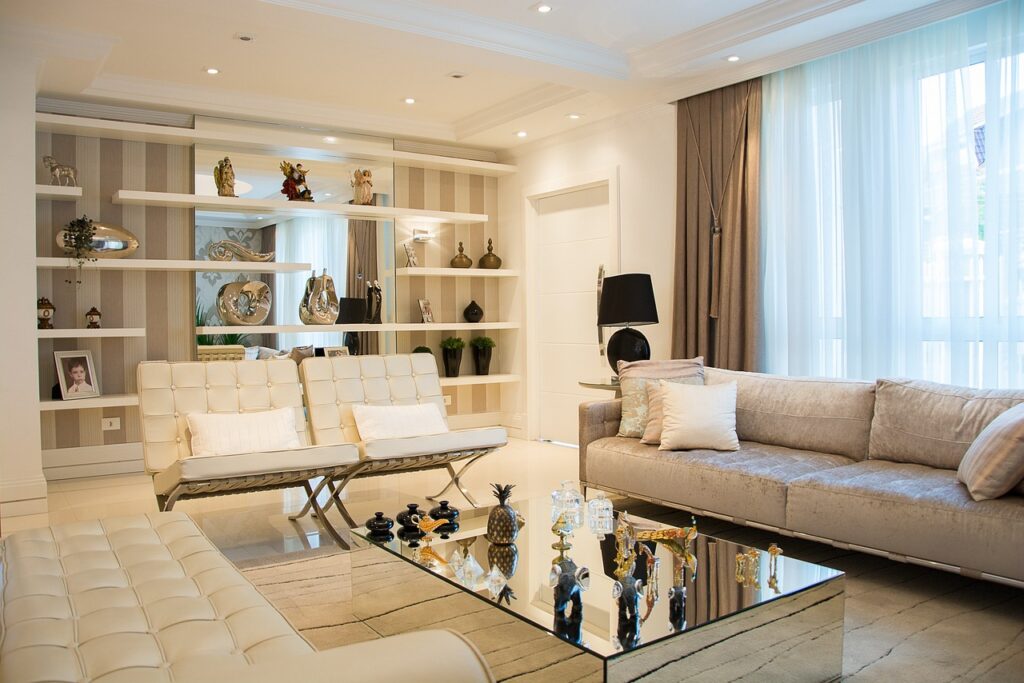Last year, the visual search engine Pinterest(link is external) recognized “biophilic design” as a trending search term. Searches for “biophilic architecture” had risen 150%, while searches for “biophilic design bedroom” were up 100%. For real estate professionals, it’ll be important in coming months and years to understand this particular trend and how to incorporate it into a space.
Though it’s making a comeback, this design philosophy is not new. Biophilic design was pioneered in the 1980s by biologist Edward O. Wilson, whose work focused on humans’ need to connect with nature, according to Brooke Lang, interior designer and owner(link is external) of Brooke Lang Design in Chicago.
Everything old is new again, but how are millennial and Generation Z homeowners and tenants making biophilic design their own? Interior design experts offer insights on how this trend is being incorporated now.
Biophilic Design 101
“Biophilic design is all about human connection to nature through architecture,” says Ariana Lovato, interior designer and owner(link is external) of Honeycomb Home Design in Arroyo Grande, Calif. In other words, a house infused with this kind of design should make its residents feel like they are stepping into the natural world: soothing, inspiring, and supportive of physical, mental and emotional wellness.
Lang quickly points out that biophilic design requires more than just scattering a few potted plants throughout the house. She describes it as a whole-building design style that includes layout, lighting, a seamless indoor-outdoor connection and natural materials.
Why It’s Trending Again
True biophilic design is about more than pleasing color palettes and potted plants. The goal is for the space to feel like nature feels: relaxing and restorative. And interior design clients have been craving mood-boosting spaces, according to Lang and Lovato.
“We’ve learned through COVID that our surroundings have so much impact on us,” says Lovato. “Manufacturers have been paying attention to this.” For example, she points to Sprig, Kohler’s recently launched aromatherapy infusions system for showerheads.
For Lang, the biophilic design comeback means more requests for office and home workspaces designed to positively impact well-being through connections with nature. For one of her current projects, a coworking space in Chicago’s Englewood neighborhood, she is prioritizing natural light, indoor-outdoor gardens and floor plans with an organic feeling.
5 Biophilic Design Trends
1. Seeing green
One of the easiest ways to add a touch of biophilic design? Go green—literally.
“Colors in greens are huge this year, and it’s been proven how much of a relaxing color green can be,” says Lovato. “We’re seeing green in cabinetry, wall color, even toilets this year.”
While painting an accent wall emerald or lime isn’t enough to say a home has biophilic design, it’s an accessible way to ease into the trend. For younger, budget-conscious tenants and homeowners, incorporating biophilic concepts through paint and artwork is often the first step, says Lang.
2. Living walls
Homeowners are getting creative with plants. As HGTV(link is external) has pointed out, living walls—walls covered with living plants—are trending. They’re also a classic example of biophilic design.
“Millennials in particular are using elements of biophilic design by adding [living] walls,” says Lang. “For example, our firm just completed a design of a zen room for a client, where we have added a backlit green plant wall to bring the outside in.”
3. Natural, native materials
There’s nothing that connects an interior to its natural surroundings like nature itself.
“Natural stone is having a huge resurgence this year,” says Lovato. Homeowners are opting for “authentic” materials, even when they cost more, she adds. That includes natural stone countertops over engineered quartz and hardwood floors over luxury vinyl plank.
For some clients, natural materials that reflect their immediate surroundings, rather than imported from another area, is important. “It’s also not uncommon for clients to request interior decor choices that reflect elements from the natural habitat, whether it’s sourcing furniture or beams made from a local hardwood or incorporating greenery from the local area,” explains Lang.
4. Emphasis on landscape design
The days of shiny new builds on lackluster plots might be coming to an end. Today’s biophilic-minded clients want their outdoor spaces to feel like a true extension of the home.
That could be using the same plants or potted trees in outdoor landscaping and indoor living. Or it could simply mean that transition spaces, such as screened-in porches or outdoor kitchens, get just as much design attention as the main bedroom, bathroom or kitchen.
From sliding glass doors to glass walls, indoor-outdoor connections are on the rise. Indoor-outdoor gardens and dining and entertainment spaces are especially popular right now, according to Lang.
5. Zen spaces and meditation rooms
“Millennials in particular are using elements of biophilic design by adding [living] walls, zen areas and meditation areas to the homes,” says Lang.
But millennials aren’t the only ones craving dedicated relaxation spaces. Though Lovato’s baby boomer clients rarely use the term “biophilic design,” they too are requesting designated rooms designed for meditation or therapeutic activities like taking a sauna or steam.
“They are asking for the same feeling that biophilic design is meant to create,” she says.

©National Association of REALTORS®
Reprinted with permission


